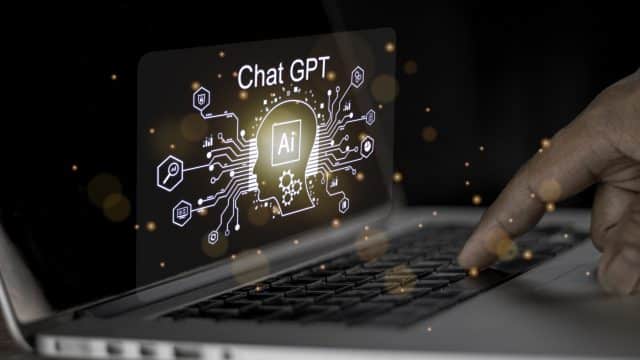How ChatGPT can actually be useful for businesses

ChatGPT isn’t just a friendly chatbot -- it’s also a valuable business tool. This advanced conversational AI has many applications in the workplace, from drafting creative copy to debugging code. How can businesses use it to improve productivity and create a better customer experience?
The main application of ChatGPT in business is brainstorming and idea generation. ChatGPT doesn’t think the same way people do, which means it can often randomly generate unusual ideas. It might respond unexpectedly to a prompt or create a reply that offers a unique insight.
SEE ALSO: ChatGPT may not be a bad thing for education
There are many different ways businesses can use ChatGPT for idea generation. For example, the AI’s natural language capabilities make it a good tool for generating prose text. It could draft a blog post or produce ideas for creative copy. A professional writer could even input some of their starting text in ChatGPT and see how the AI responds to get an idea of how their copy might sound to a reader.
Simply asking ChatGPT questions can also generate intriguing ideas, whether informational or creative. ChatGPT could offer ideas for a new marketing strategy or insights about why a product might not be selling well. Of course, the AI can’t completely replace humans in this capacity, but it can offer a helpful perspective and act as a good sounding board.
Automating Editing and Debugging
ChatGPT is an excellent tool for writing and editing prose, poetry and even code. It can be surprisingly creative for something that isn’t actually capable of creativity in the human sense. The content that ChatGPT generates may have factual inaccuracies or otherwise unacceptable content in it, but it can still be a great starting point. After all, even the most creative people still occasionally run into roadblocks.
Using ChatGPT isn’t just about creativity, though -- it also offers a big boost in efficiency. Things like writing or coding can both have tedious, time-consuming editing processes. This is especially true with code, where even a single comma or semicolon can cause an entire program to fail. Doing tasks like this manually can result in at least 12 workplace issues, including poor productivity and higher expenses.
Content Editing and Proofreading
ChatGPT can improve productivity in both writing and coding. Writing is a highly creative process, so AI may not replace writers completely. However, the editing process is usually based on a set of rules -- such as a style guide -- that determines how the content should look and sound. Rules create patterns, which AI algorithms can handle very well.
ChatGPT can estimate the tone, style and format of text. This allows it to generate many different types of text-based content. For example, a marketing professional could use ChatGPT to draft an email newsletter. Through replies with the AI, they could tweak the tone or adjust the content.
The ability to comprehend and mimic natural human language makes ChatGPT a good proofreading tool. If a writer asked the AI to edit their essay or press release, it could do so in a way that matches the original content. This means a human is still powering the creative process by giving ChatGPT a starting point. The AI is simply streamlining the process.
Code Debugging
Businesses can also use ChatGPT in their IT and programming teams. It may come as no surprise that ChatGPT is good with code, considering it is made of code. Programmers are already using the AI to edit and even debug their programs. Finding and fixing an error in a program can be highly time intensive, as a single misplaced character can cause an entire program to fail.
ChatGPT takes the time and monotony out of this task by quickly scanning over code itself. Human coders have to verify that the AI’s solution actually works, but it can at least help them find where the problem is.
24/7 Automated Customer Service
Many people don’t think favorably about customer service bots. Conventional "chatbots" are often little more than answering machines, only capable of pre-programmed responses. However, that’s no longer the case with ChatGPT. This is truly the next generation of conversational AI and it has tremendous potential in customer service applications.
ChatGPT is excellent at answering questions, to such a degree that some speculate it will replace Google one day. Businesses can use this natural language processing skill to automate many aspects of customer service.
For example, many day-to-day customers' questions can be quickly answered, but traditional customer service channels drag out response times. Since a limited number of customer service representatives are available, a quick question can take an hour to answer. ChatGPT can replace rudimentary chatbots and handle most of these short customer questions. If the AI runs into a question it can’t resolve, it forwards the customer’s request to a customer service representative.
Applying ChatGPT to automated customer service offers benefits for businesses as well as customers. Intelligent chatbots can create a 30 percent reduction in customer service expenses. With fewer questions forwarded to customer service representatives, companies can have a smaller team in that department. ChatGPT can also run around the clock, allowing businesses to remove customer service representatives from unappealing night shift positions.
ChatGPT: All-Purpose Business Assistant
ChatGPT is a fantastic tool for all kinds of day-to-day business tasks, from helping out customers to debugging a software program. Businesses can use it to write email newsletters, adjust marketing copy, generate new product ideas, improve employee productivity and provide a better customer experience.
Image credit: [email protected]/depositphotos.com

Devin Partida writes about AI, apps and technology at ReHack.com, where she is Editor-in-Chief.
